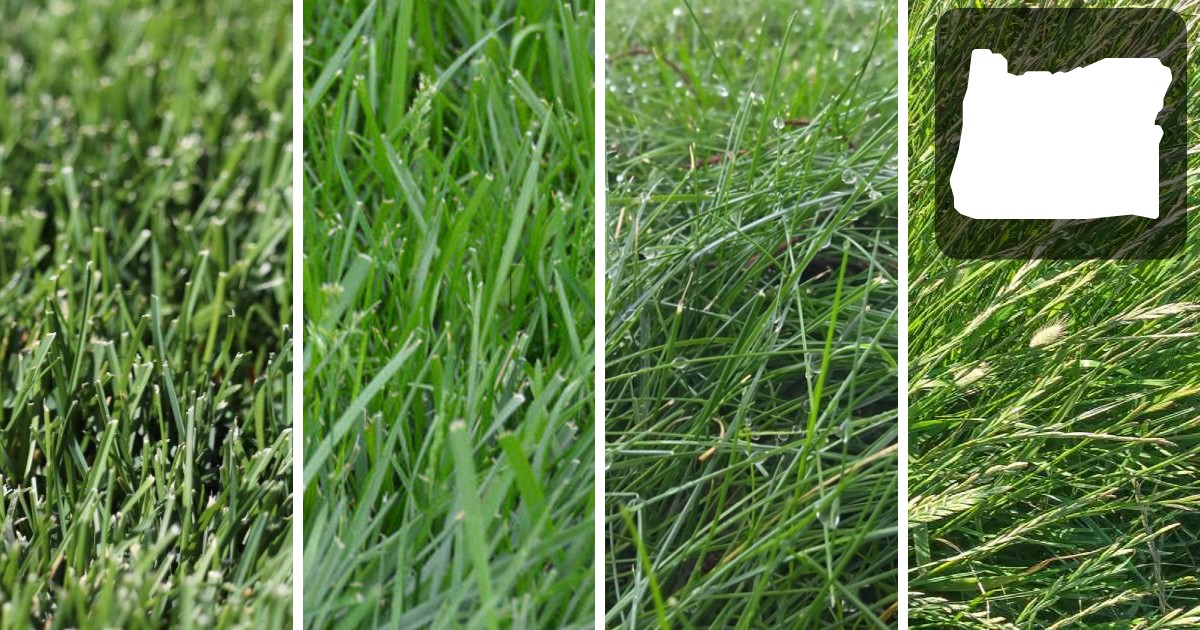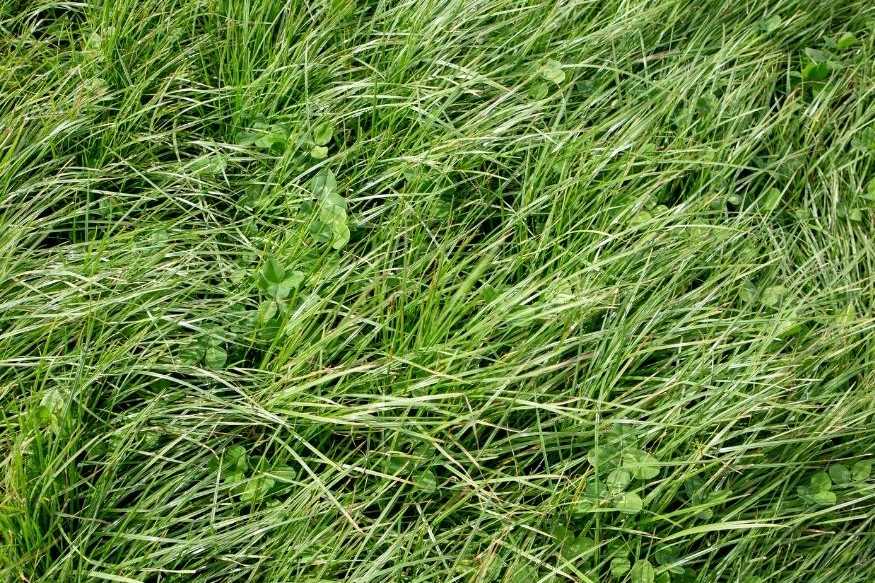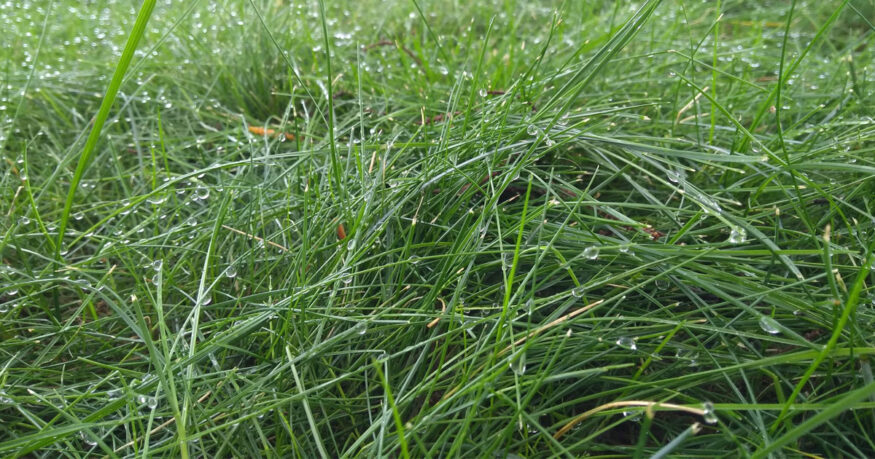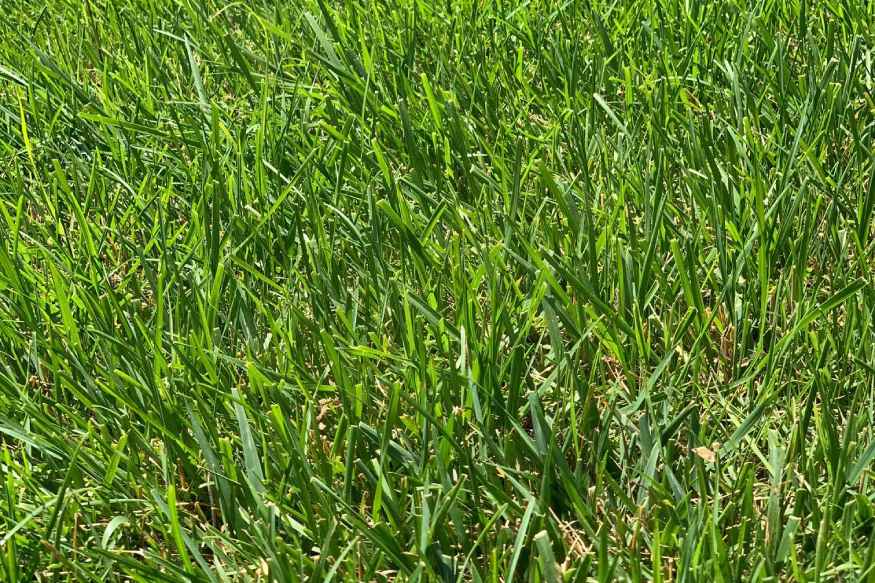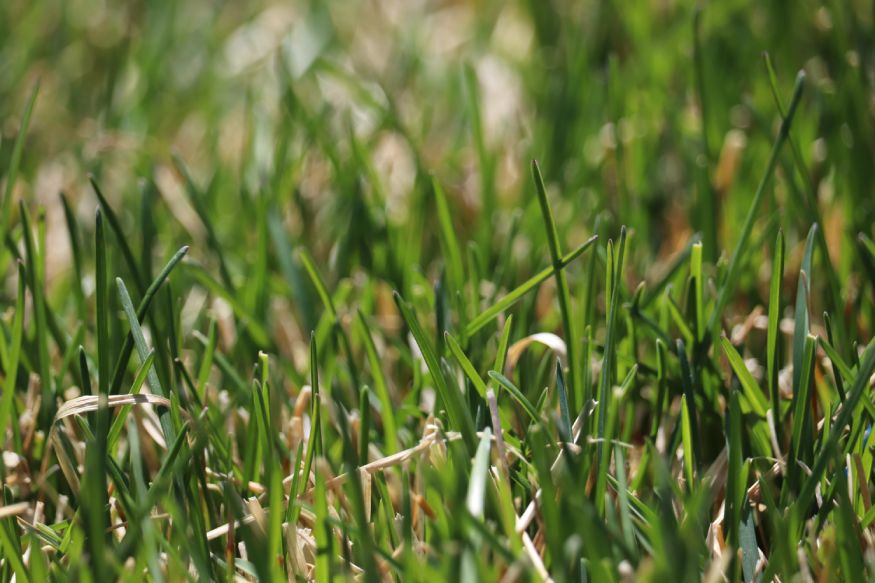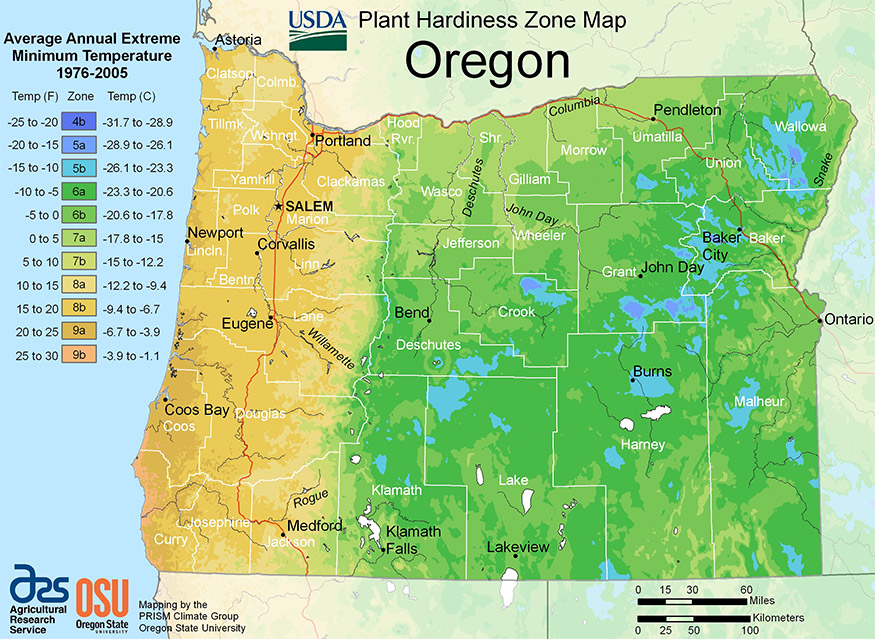Lawns in Oregon can be challenging to grow due to the state’s diverse climate, soil conditions, and varying water availability. However, selecting the right grass seed can make a significant difference in the success of establishing a lush and healthy lawn.
Perennial Ryegrass is a popular and reliable option for lawns in Oregon, offering quick germination and strong drought tolerance. However, there are other options available to suit different lawn requirements, from shade tolerance to disease resistance.
Read on to learn more about the best grass seed options for Oregon and how to choose the right one for your lawn.
[ez-toc]
Perennial Ryegrass
| Also Known As | Lolium perenne L. |
| Type of Grass | Cool season perennial |
| Optimal Zones | Mild northern zones |
| Root Structure | Deep |
| Winter hardiness | Good to excellent |
| Shade tolerance | Moderate |
| Water Requirements | High |
| Drought Tolerance | Good |
| Self Repair Capacity | Excellent wear tolerance |
| Overall Maintenance Requirements | Moderate to high |
Why Perennial Ryegrass is The Most Popular Choice For Oregon
Perennial Ryegrass is a fine-bladed turf grass that is widely used and popular among homeowners in Oregon. With its ability to germinate in as little as 7 to 10 days, its strong root system, and its dark color, it is a top choice for lawns in the state.
This cool-season grass can adapt to different soil types, including poor soils, clay, and poorly-drained areas. It is also a low-maintenance grass that is naturally resistant to diseases and pests, making it a great option for those looking for an easy-to-care-for lawn.
Perennial Ryegrass is also a great choice for reclaiming construction areas and preventing erosion on steep banks. Its clumping growth habit means it doesn’t produce much thatch, and it is often used as a nurse grass in grass seed blends to provide shade and protection to other grass species.
However, one of the main issues with Perennial Ryegrass is its growth habit. It forms clumps and doesn’t spread through stolons or rhizomes, meaning bare spots may need to be re-seeded regularly. It also prefers open, sunny locations and may struggle to thrive in shady areas.
Additionally, the severe winters of the upper part of the northern states can kill Perennial Ryegrass. Despite these drawbacks, Perennial Ryegrass remains a top choice for lawns in Oregon due to its quick germination, low maintenance needs, and disease resistance.
Looking for the best grass seed for your region?
Our smart lawn plans are designed to work perfectly with your local soil and climate conditions, without any of the toxic stuff.
Use the code EHG20 for an instant $20 discount!
- Personalized lawn care: Custom lawn plans based on soil analysis, climate data, and your specific lawn needs.
- Convenience with a conscience: Products that are not only easy to use but also safe for you, your pets, and the planet.
- Science-backed formulas: Bio-based formulas contain effective, natural ingredients like seaweed, molasses, and iron.
- Expert support: Get one-on-one guidance from a real person and rest easy with Sunday's satisfaction guarantee.
Fine Fescues
| Also Known As | Hard fescue, strong creeping red fescue, slender creeping red fescue, sheep fescue, chewings fescue; Festuca L. |
| Type of Grass | Cool season perennial |
| Optimal Zones | Northern zones |
| Root Structure | Medium |
| Winter hardiness | Excellent |
| Shade tolerance | Excellent |
| Water Requirements | Medium to High |
| Drought Tolerance | Excellent |
| Self Repair Capacity | Limited |
| Overall Maintenance Requirements | Low |
What Makes The Fine Fescues A Great Grass For Oregon
Fine Fescue is a cool-season grass that is popular for its shade tolerance and low maintenance needs. This type of grass is well adapted to the Pacific Northwest and is often found on lawns, in parks, along roadsides, and in other turf grass areas. With its deep green color and fine leaves, it is one of the most attractive options for those looking to establish a lawn in Oregon.
Fine Fescue varieties, such as Chewings Fescue, Red Fescue, Creeping Red Fescue, Sheep Fescue, and Hard Fescue, all have similar characteristics. They are low maintenance and grow best in cool, humid regions and in high elevations. They are also well adapted to poor, dry, and sandy soils, making them a great option for those who want a lawn that is easy to care for.
Fine Fescue is highly shade tolerant and does well in partial shade. It requires little maintenance, with weekly mowing best during the growing season, and is resistant to disease and pests. However, it is not recommended for sports fields and golf tees, as it has a low wear tolerance. To get the most out of this type of grass seed, it is recommended to mix in about 30% of perennial ryegrass for even faster establishment.
Fine Fescue is an excellent option for those looking to establish a lawn in Oregon. With its high shade tolerance, low maintenance needs, and attractive appearance, it is an ideal choice for homeowners looking for a lawn that is easy to care for and looks great all year round.
Tall Fescue
| Also Known As | Lolium arundinaceum (formerly Festuca arundinacea) |
| Type of Grass | Cool season perennial |
| Optimal Zones | Northern through transition zones |
| Root Structure | Deep |
| Winter hardiness | Excellent |
| Shade tolerance | High |
| Water Requirements | Medium to High |
| Drought Tolerance | Excellent |
| Self Repair Capacity | Limited |
| Overall Maintenance Requirements | Low |
Why Tall Fescue Grows well in Oregon
Tall Fescue is a versatile and hardy grass that is widely used for home lawns, parks, playgrounds, athletic fields, and other low-maintenance areas. With its rich, healthy color, improved insect and disease resistance, and wear resistance, it is an excellent choice for homeowners looking for a lawn that can withstand harsh weather conditions and still look great.
Tall Fescue is known for its high tolerance for heat, drought, cold, and shade, making it one of the most adaptable grasses available. It is favored by turfgrass professionals for its beneficial characteristics, including wear tolerance on playgrounds and athletic fields, heat and drought tolerance along paved highways, and shade tolerance in parks and industrial campuses.
With the recent improvements in its color, disease resistance, slower growth rate, and lower mowing heights, tall fescue has become increasingly popular in high-profile landscapes. This type of grass has a coarse-textured, medium to dark green color, with leaves that are rolled in the bud. It has a bunch-type growth habit, which means that open areas may develop and need to be reseeded, but with proper mowing and fertilizing practices, it can remain dense and keep its blades thin.
For the best results, tall fescue should be planted in September or October. Seeding earlier can result in excessive heat stress and seedling diseases, while planting later may not allow the grass to fully establish itself before winter. In general, seeding in December and early spring is not recommended as the plant does not have enough time to develop a deep root system to survive the hot summer.
Tall fescue is an excellent choice for homeowners who want a lawn that is adaptable to harsh weather conditions, low maintenance, and attractive throughout the growing season. With its improved resistance to insects and disease, and its wear tolerance, it is a versatile and resilient option for lawns in Oregon.
Kentucky Bluegrass
| Also Known As | Poa pratensis L. |
| Type of Grass | Cool season perennial |
| Optimal Zones | Northern cool season zone, transition zones |
| Root Structure | Shallow |
| Winter hardiness | Excellent |
| Shade tolerance | Poor to Good |
| Water Requirements | High |
| Drought Tolerance | Poor |
| Self Repair Capacity | Excellent |
| Overall Maintenance Requirements | High |
Why Kentucky Bluegrass Is a Popular Grass seed Choice
The Pacific Northwest is home to many homeowners who value a beautiful and lush lawn. One of the most popular choices in Oregon is Kentucky Bluegrass, a cool-season grass known for its signature dark blue-green color. With its moderate shade tolerance, high foot traffic tolerance, and moderate drought tolerance, this grass is versatile and grows well in a range of soils, provided it receives four to six hours of sun.
However, it’s important to note that Kentucky Bluegrass does require moderate to high maintenance, such as annual dethatching, nitrogen fertilization, and frequent watering and mowing. To ensure strong root development, the best time to plant this grass in Oregon is during the fall when temperatures drop to between 50-65 degrees Fahrenheit.
For those living in areas with extremely cold temperatures or poor soils, alternative options include Canada Bluegrass and Rough Bluegrass for low-maintenance, or Supina Bluegrass for properties with high foot traffic or up to 90% shade.
Overall, Kentucky Bluegrass is a popular choice for homeowners in Oregon due to its beautiful color and versatility, making it a great option for those who are willing to invest the time and effort into its maintenance.
Oregons Climate And Growing Challenges For Lawns
Oregon experiences a diverse range of climates, from the coastal areas to the mountainous interior. Coastal areas tend to have milder temperatures during the winter months, while the interior experiences colder temperatures.
This diverse climate affects what types of plants, including lawn grass, can thrive in the state.
Soil Conditions
Soil conditions in Oregon vary greatly, from the rich soils in the Willamette Valley to the poor and rocky soils in the mountains. Understanding the soil conditions in your area is important in determining what type of grass is best suited for your lawn.
Weather
Oregon experiences a wide range of weather conditions, from heavy rain and snow in the winter to hot, dry summers. This can make it challenging to grow a lawn that is both resilient and able to withstand the various weather conditions in the state.
Other Challenges
Elevation, shade, and microclimates also play a role in the challenges of growing a lawn in Oregon. For example, gardeners living in the Willamette Valley may find it difficult to grow certain plant species that would thrive at higher elevations, such as Council Crest. Understanding the specific challenges in your area is important in choosing the best type of grass for your lawn.
Looking for the best grass seed for your region?
Our smart lawn plans are designed to work perfectly with your local soil and climate conditions, without any of the toxic stuff.
Use the code EHG20 for an instant $20 discount!
- Personalized lawn care: Custom lawn plans based on soil analysis, climate data, and your specific lawn needs.
- Convenience with a conscience: Products that are not only easy to use but also safe for you, your pets, and the planet.
- Science-backed formulas: Bio-based formulas contain effective, natural ingredients like seaweed, molasses, and iron.
- Expert support: Get one-on-one guidance from a real person and rest easy with Sunday's satisfaction guarantee.
Frequently Asked Questions
What is the best grass seed for a lawn in Oregon?
The best grass seed for a lawn in Oregon depends on various factors such as your lawn’s soil type, shade tolerance, water availability, and other preferences. Some popular options include Perennial Ryegrass, Kentucky Bluegrass, Canada Bluegrass, Rough Bluegrass, and Supina Bluegrass. It’s best to choose a grass seed that suits your specific needs and conditions in your area.
What are the most important factors to consider when choosing a grass seed for Oregon?
When choosing a grass seed for Oregon, it’s essential to consider factors such as your soil type, shade tolerance, water availability, and other preferences. Additionally, you should consider the grass seed’s drought tolerance, disease resistance, and maintenance requirements. It’s crucial to choose a grass seed that suits the unique conditions of your lawn in Oregon.
What are the benefits of planting Perennial Ryegrass in Oregon?
Perennial Ryegrass is a popular and reliable grass seed option for lawns in Oregon due to its quick germination and strong drought tolerance. Additionally, it offers excellent wear tolerance and disease resistance, making it an ideal choice for lawns that receive heavy foot traffic. Furthermore, Perennial Ryegrass is easy to maintain and provides a lush green lawn throughout the year.
What are the best grass seed options for shady areas in Oregon?
For shady areas in Oregon, grass seeds that offer good shade tolerance are the best option. Some popular options include Supina Bluegrass and Rough Bluegrass. These grass seeds are known for their ability to grow well in areas with low light levels, making them ideal for shady lawns in Oregon.
What is the best time of year to plant grass seed in Oregon?
The best time to plant grass seed in Oregon is in the fall when temperatures drop to between 50-65 degrees Fahrenheit. This allows the grass seeds to establish strong roots and grow well throughout the year. Planting grass seed in the spring or summer can lead to stress and reduced growth, so it’s best to wait until the fall to plant your grass seeds in Oregon.
